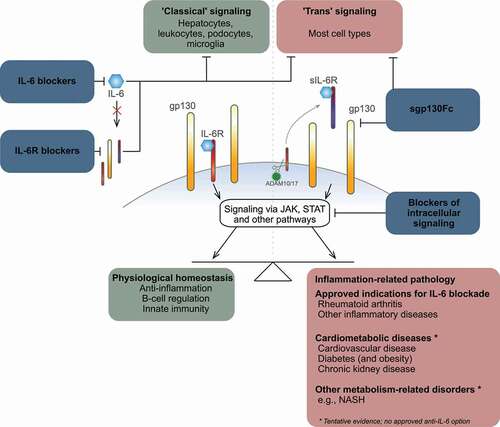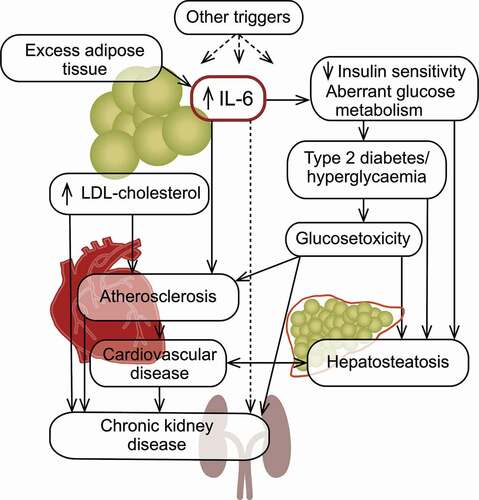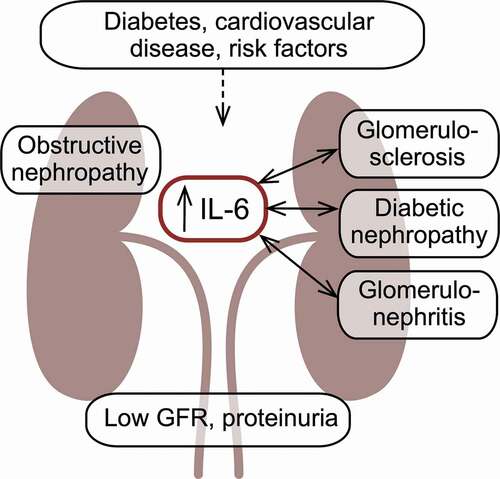Figures & data
Figure 1. The effects and blockade of interleukin 6 signaling.

Table 1. Licensed and selected in-development blockers of interleukin 6 signaling
Figure 2. Interleukin 6 in cardiometabolic disorders.

Figure 3. Interleukin 6 in chronic kidney disease.

